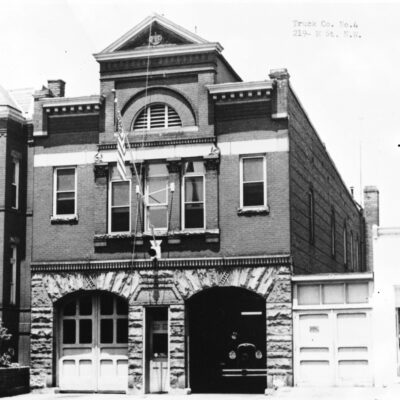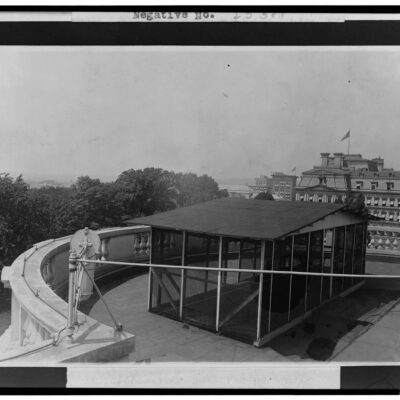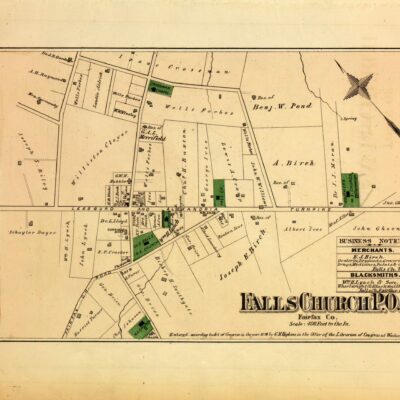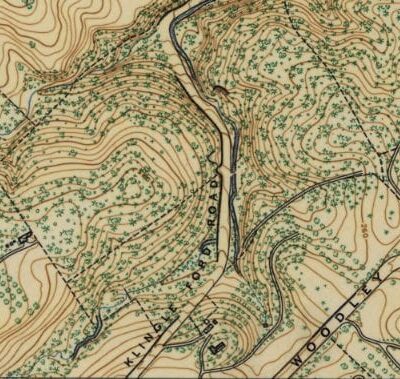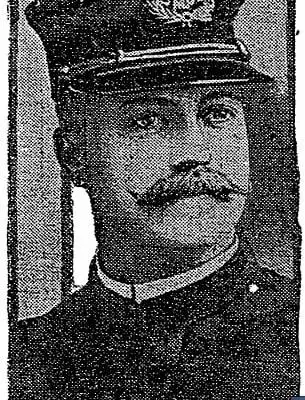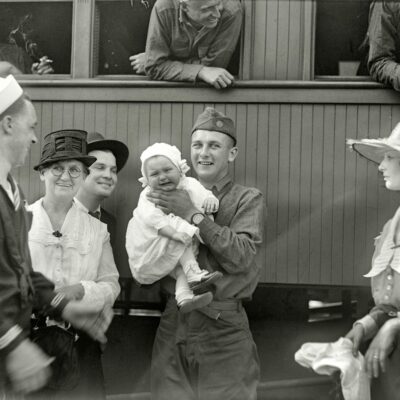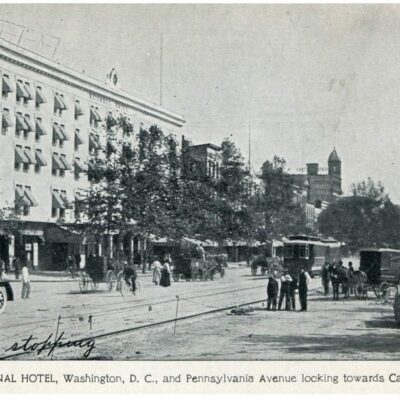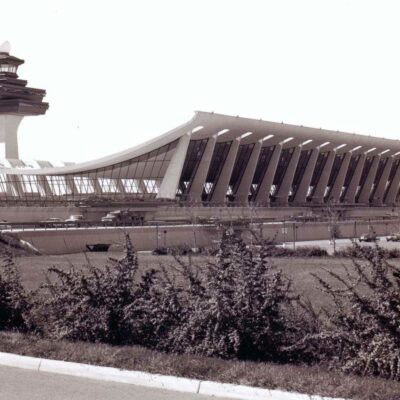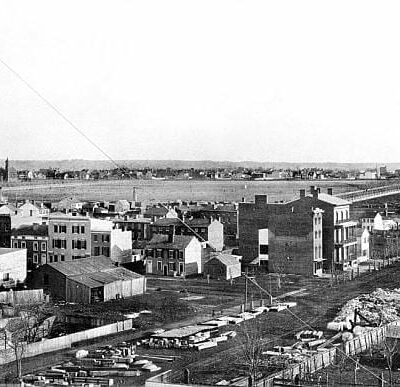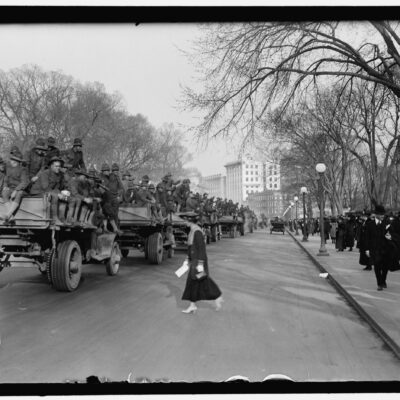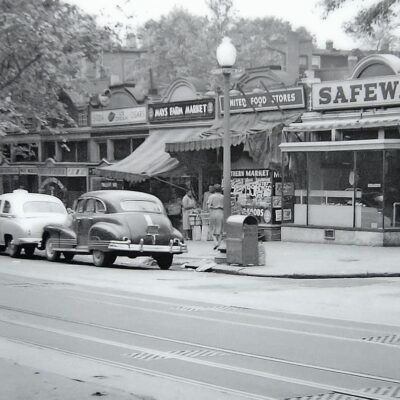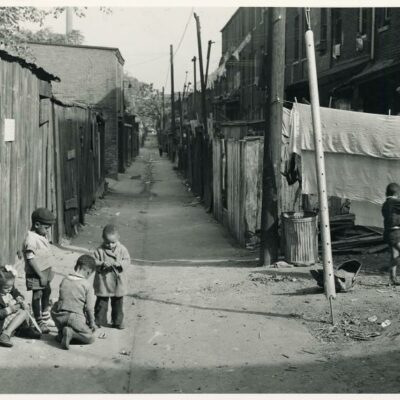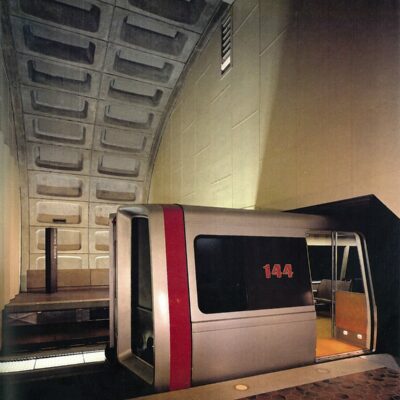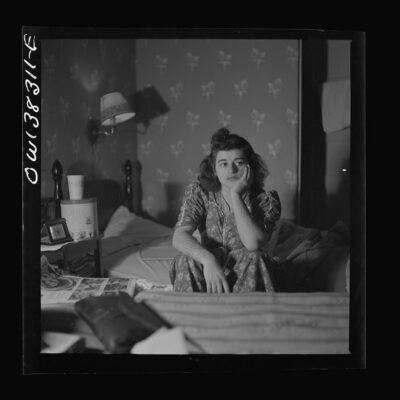Hopefully you found our last post about Hell’s Bottom fascinating. At the very least, it was educational, and now you know how horrible this place was.
We came across an interesting article in the Washington Post from February 4th, 1900, spotlighting the former “King of the Bottom,” Keith Sutherland.
Like that last post, this one will give you some colorful descriptions of life in Hell’s Bottom.
KEITT’S.
I, am, going,
to, put, my,
name, above,
THE DOOR.The above legend with its superfluity of commas, inscribed on a piece of board about a foot square, nailed above the door of a tumble-down building at the intersection of Vermont avenue, Twelfth and R streets, marks the abode of the “King of Hell’s Bottom.” The structure thus adorned is the pool room of “Keitt” Sutherland, overlord and supreme ruler of the negroes in the vicinity. Although the encroachments of modern dwellings, increase in the police force, and other accompaniments of growing metropolitan life have somewhat shorn him of his feudal rights and curtailed his former realm, “Keitt” is now, and always will be, monarch of all he chooses to survey.
It is still within the memory of the present generation when “Hell’s Bottom” was a fact and not a memory. The swampy, low-lying ground bred mosquitoes, malaria, and – thugs. It was the quarter set apart for and dominated by the tough element of the colored population. A white man with money in his pocket studiously avoided the locality after dark, or else set a fast pace to which he adjusted the accompaniment of a rag-time whistle. Half a dozen saloons congested within the radius of a block served the barroom habitués with whisky as hot as chile con carne and as exhilarating as Chinese pundu. Fights arose approaching the dimensions of a riot, and the guardians of the law had all they could do to quell the disturbances. A policeman or two was killed, and that, together with the growth of the city, led to the rehabilitation of “Hell’s Bottom.” Now it is interesting mainly in its wealth of reminiscence.
“How did I happen to put up that sign?” Keitt repeats after the inevitable query. “I’ll tell you. You see my folks used to own that property, and they was sort o’ slow dyin’ off. I knowed I was going to come into it some day, an’ I thought I might as well let people know it. About that time a show came along, and they sang a song somethin’ like this: “I am going to put my name above the door. For it’s better late than never. An’ I’ll do so howsomever.’ It gave me an idea. I just put that sign above the door. After while the folks died, an’ I got the property.”
Through the magic of Shorpy, we actually found a photo of the King of Hell’s Bottom, “Keitt” Sutherland.
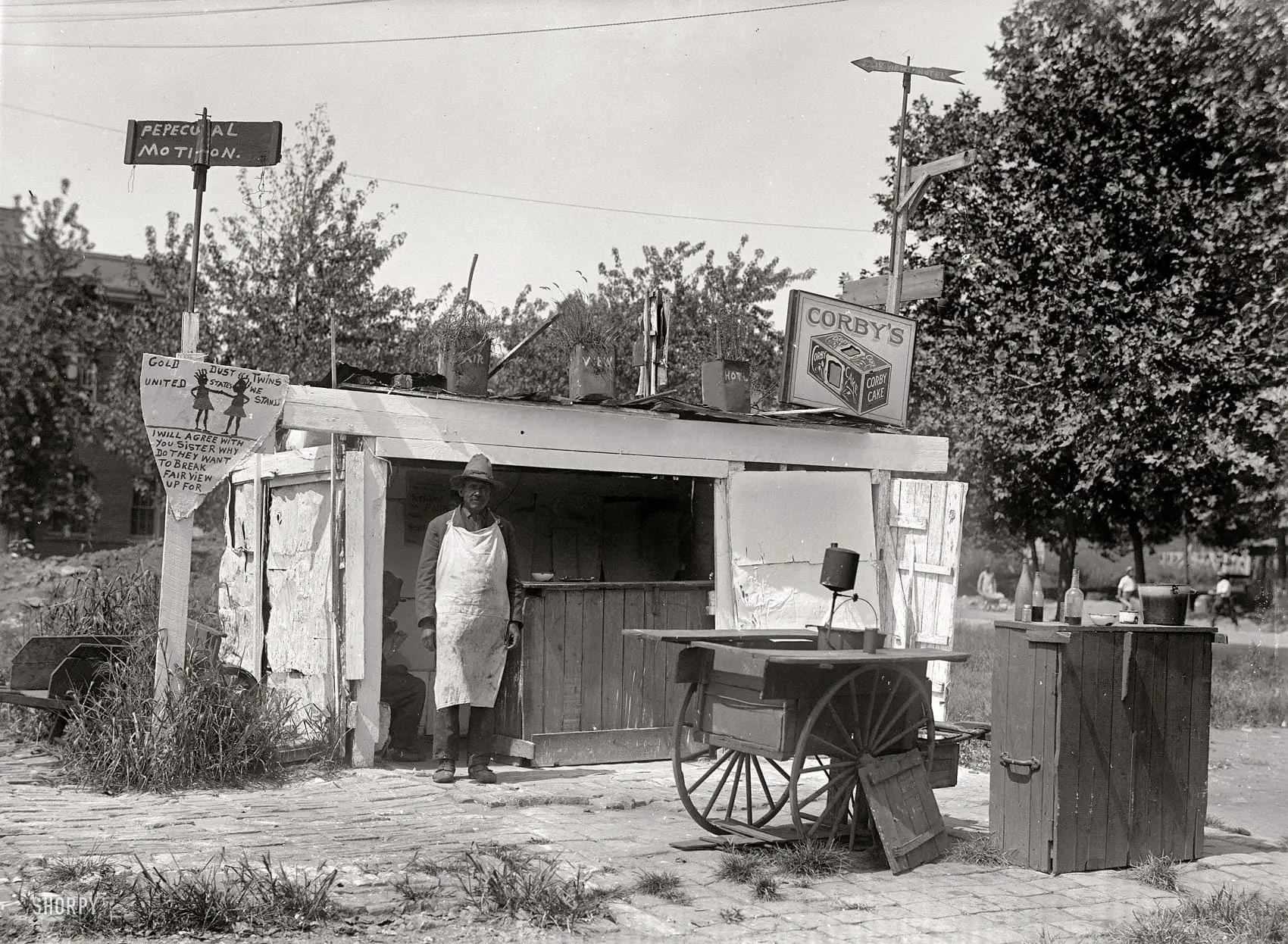
The story continues …
Guided by the much-be-commaed signboard, the visitor goes to the door of the poolroom and inquires for “Keitt.” He finds the room filled with colored youth of all sizes, the adults of which are engaged in playing pool at 5 cents a game. The balls on the table are a joblot, the survivors of the fittest in many a hard-fought game. The cushions are about as responsive as brickbats. But the players do not seem to care for that so long as they can drive the balls into the pockets and make their opponents pay for the sport. An ancient, dingy card on the wall informs the reader that he is within the precincts of the “Northern Light Poolroom.” The same placard also gives the following warning: “Persons are cautioned against laying around this building.”
“Where is Keitt?” inquires the intruder, who finds himself regarded with suspicion.
“Two doahs down below. Jest hollah ‘Katy,’ an’ he’ll show up,” is the answer.
“Keitt” on inspection justified the right to the title of “king.” He is a giant, weighing 250 pounds, well distributed over a broad frame six feet and one inch in height. He looks like a man who would not shun a rough and tumble fight. He does not have to. A registered striking machine off in the corner shows that he can deliver a 500-pound blow. He might do better, but unfortunately the makers of the instrument did not figure that a man’s fist was a pile driver, and 500 pounds is as high as the machine will register. Many are the tables told of his prowess; of how he whipped in single combat the slugger of the community, a man who had challenged any five to come on at once; of how when only a bootblack in the ‘60’s, he sent three bullies about their business with broken heads and black eyes; of how he used to suppress incipient riots in his saloon by means of his strong arm and without the aid of the bluecoats in the neighborhood. Indeed, the police used to say that “Keitt” was as good as a sergeant and a squad with loaded “billies.”
But “Keitt” (the name is a popular conversion of the more familiar “Keith”) has not won his way entirely through the medium of brawn. He is a man of intelligence, and has a keen eye for business. He is the magnate of the neighborhood, with property in his name, money in the bank, and a good comfortable roll about his place of business. He can go down in his pocket and bring out more $50 bills than the average man caries about in the $5 denomination. If one hints robbery or burglary “Keitt” simply rolls his eye expressively, and enough has been said. No one cares to tamper with his till.
Nobody messes with this dude. He’s the king!
The saloon on the outside looks like a combination coal and wood shed. “Keitt” apologetically explains that it was formerly a stable, and that he has not had time to fix up much. Nevertheless, the fish, beans, sandwiches, and other eatables are so tempting that the frequenters of the place do not pay much attention to external appearances. The magic of the proprietor’s name draws as much custom as he can attend to, and fully as much as the customers can pay for. There is a charm about the old haunt that cannot be dispelled by police regulations or the proximity of modern dwellings.
On Saturday night the place takes on something of its old glory. In the smoke-begrimed room – hardly 12 by 12 – are found thirty or forty men eating and talking. Through the thick clouds of smoke the lamps throw out a dim gleam, and the odor of frying fish and the fumes of the pipe struggle for the mastery. The crowd gets noisy at times, but any attempt at boisterousness is quieted by a word from the dominant spirit of the gathering. If any one gets obstreperous he is thrown out on the pavement, and it makes little difference to the bouncer whether the mutinous one lands on his head or not. This is the negro Bohemia. They who live from hand to mouth love to come her. The boot-black with a dime receives as much consideration as the belated teamster with a roll of one-dollar bills.
Business is business, and “Keitt” is a business man. Consequently there is very little credit given. “Five or ten cents is about the limit,” says the autocrat. But “Keitt” is something of a philanthropist., although he makes his charity redound to his personal benefit. An illustrated placard, done in what appears to be an excellent quality of shoe blacking, has the figure of a man sawing wood. It bears the following words, “Just tell them that you saw me sawing wood at Keitt’s for a grind.” The term “grind” is synonymous with mastication, the wood sawyer thereby being supposed to do a stunt for the recompense of a square meal. This does away with the tearful plaint that is ever the specialty of the hungry and penniless, gives employment to the idle, and increases the size of “Keitt’s” wood pile. The latter is sold to the negroes of the neighborhood at prevailing prices. “Keitt” figures that his method is wiser than giving unlimited credit, and he is probably right.
“Keitt” is a mine of reminiscence. He has been in Washington 1862, when he came from Charles County, Md., where he was born a slave. He was a bootblack around the Treasury building, and he remembers seeing Lincoln’s funeral pass by, with the white horse tied behind the hearse. His history of the rise and fall of “Hell’s Bottom” is quite valuable from a local standpoint. Divested of dialect, it is as follows
“’Hell’s Bottom’ began to get its name shortly after the close of the war in 1866. There were two very lively places in those days. One was a triangular square at Rhode Island avenue and Eleventh street. It was here that an eloquent colored preacher, who went by the name of ‘John the Baptist,’ used to hold revival services, which were attended by the newly-freed slaves. The revival was all right, but the four or five barrooms in the neighborhood used to hold the overflow meetings, and when the crowds went home at night you couldn’t tell whether they were shouting from religion or whisky.
“Then there was what was known as the ‘contraband camp,’ located on S street, between Twelfth and Thirteenth. The negroes who had just been freed stayed there waiting for white people to come and hire them. They got into all sorts of trouble, and many of them settled in the neighborhood. Money was scarce and whisky was cheap – a certain sort of whisky – and the combination resulted in giving the place the name which it held for so many years. The police force was small. There was no police court, and the magistrates before whom offenders were brought rarely fixed the penalty at more than $2. Crime and lawlessness grew terribly, and a man had to fight, whenever he went into the ‘Bottom.’
“The unsettled condition of the locality made things worse. Men used to shoot reed birds where Corcoran street now is. I have caught many a mud turtle there in the 60’s. I saw a man get drowned in the creek at Seventh and R streets. At the point where the engine-house is now located on R street a man could catch all the minnows he wanted for bait. Tall swamp grass afforded easy concealment for any one who wanted to hide after a petty theft or the robbery of some pedestrian. Consequently, it is small wonder that the law was defied in those days.
A creek at 7th and R? Wow … things have changed.
“A white man never wanted to cross the ‘Bottom’ after dark. If he did he had to keep stepping. Just how many crimes of magnitude were committed there no one can tell. The life of the negro was far from easy. If a fellow took a girl to church, the chances were that he would not take her home. A gang of rowdies would meet him at the church door as he came out. They would tell him to ‘trot,’ and he seldom disobeyed. They escorted the girl themselves. It was impossible to stop this sort of petty misdeeds.
“At times the trouble grew serious. I have seen 500 negroes engaged in a fight all at once in ‘Hell’s Bottom.’ That was during the mayoralty elections, and the riot would be started by the discovery of a negro who was voting the Democratic ticket. I have had big fights in my old saloon, but there was only one that I could not stop with the assistance of two bouncers I had in those days. There were fully fifty men in the saloon at the time, and most of them were drunk. They began to quarrel, and when I could not stop them I blew a distress call. About fifteen policemen came, for in those days it was useless to send two or three to quell a disturbance around here. When word came that the police were after them the last man of them rushed through the rear part of the saloon, and I’ll give you my word that they broke down the fences in five back yards in getting away. Not a man of them was captured.
“Ah, those were the days. Things are quiet around here now, but sometimes we have a little fun, and then the boys go to the farm for ninety days. I keep ‘em pretty straight in my place, though, let me tell you.”
“Keitt” Sutherland is definitely one of the top characters we have come across. And, I think it’s safe to say, Officer Sprinkle must have come across some of the ruffians from Hell’s Bottom in his time as the hero of the police force.
One final thing … we dug up some of the king’s old residences. In 1880, according to the U.S. Census, he was living at 1643 Vermont Ave. NW (with 16 other people) … in 1900, 1112 R St. NW and 1920, 104 Seaton Place NE. Also, it should be noted that he was listed as “mulatto” in the U.S. Census.

